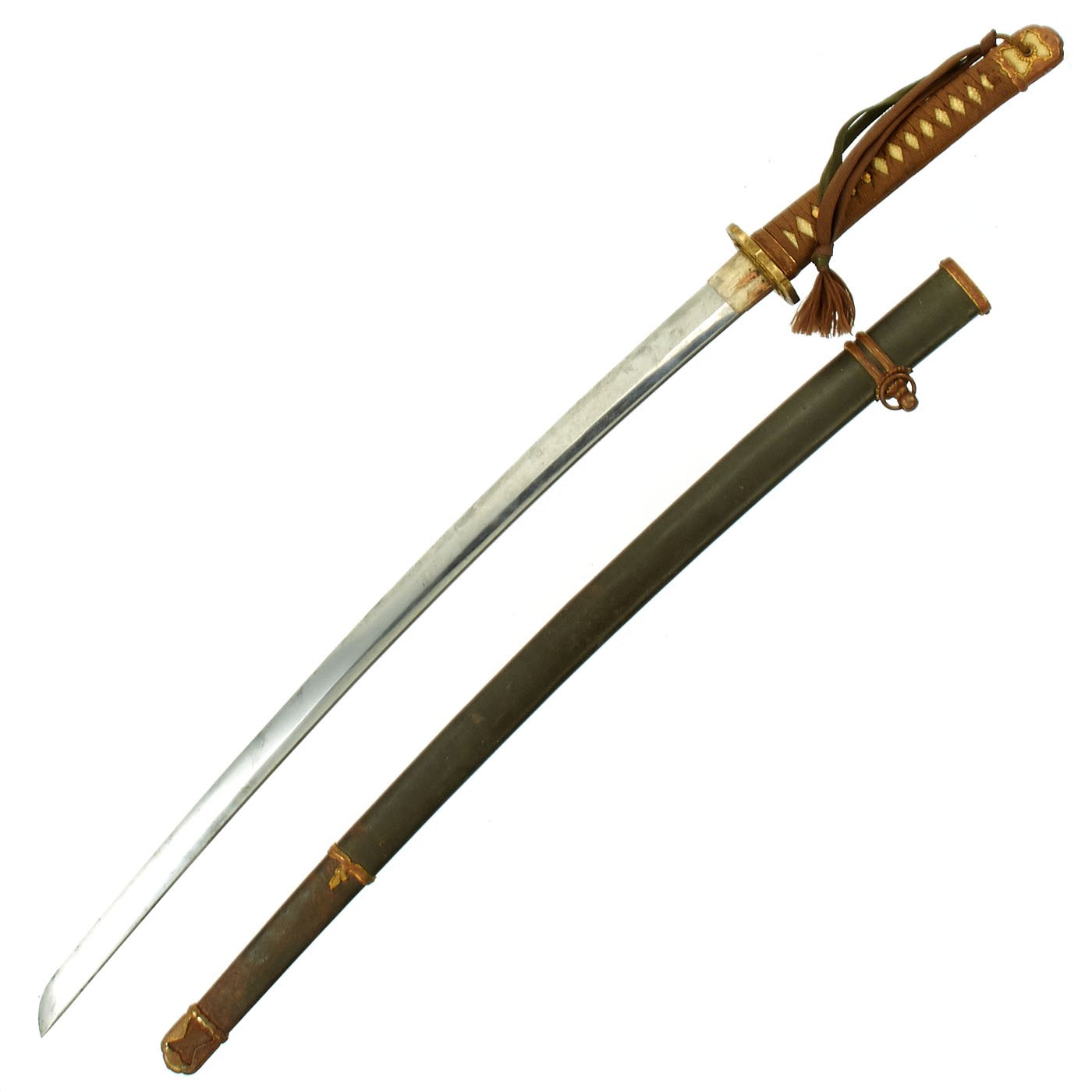JAPANESE MILITARY SWORDS

Shin-gunto, army officers swords, are the most common style of sword mountings from the World War II era. There is an enormous difference in quality of both blades and mounts of this period. Many, perhaps most, of the blades found in shin-gunto mounts are NOT traditionally made swords. Many are machine made and therefore are of interest only as military relics, not as art swords. Some blades made during the war period were handmade but not by traditional methods. These are classified as either Showato, Muratato, Mantetsuto, Hantanzo or Yotetsuto depending on method of production.
There were swords made during this period that were made using traditional methods; these are termed Gendaito or Kindaito. Some of the smiths making traditional swords during the war era are the Yasukuni Shrine smiths, those of the Gassan School, Chounsai Emura and Ichihara Nagamitsu among many others. Swords with stamps on their nakago (tangs) were made using non-traditional methods or materials, possible exceptions being some gendaito which bear star (Jumei Tosho) stamps, although this too is debated. (Check the list of Gendai swordsmiths for some of the major smiths making swords by traditional methods during the WW II period.) Some WW II era sword companies used specific logo on the scabbards and/or koshirae which they made or sold. These sword company logos do not necessarily indicate that the company made the sword. Some of these logo are simply of shops that sold swords during the war. The scabbards (saya) of shin-gunto swords are usually brown painted metal, although it is not uncommon to find tan, navy blue or black saya. Many will have leather field covers as well. Antique blades are occasionally encountered in shin-gunto mounts.
Late in the war era, two other styles of shin-gunto mounts were produced. These late 1944 style swords, sometimes (although incorrectly) called “Marine mounts” have dark brown, rough textured lacquered wood scabbards; dark brown, lacquered “burlap” ito and iron fixtures with a stippled finish which are painted black. All manner of blades are found in these mounts, from machine-made to gendaito.
The other variation of the late 1944 swords has either a light brown or a tan iron scabbard and light brown or green wrapping (ito) over cloth. Blades found in these mountings are invariably of low quality and are machine made.
By 1945, there were numerous “desperation” end of war varieties of shin-gunto being produced both in Japan and in the areas of Japanese occupation. These swords have plain copper, brass or iron mounts, simple wire tassel loops, low grade brown/tan/green ito, and poorly constructed black painted wood saya, some with leather scabbard covers. Swords of this type are all of the poorest quality, made from low grade materials. None have traditionally made blades. They are swords in form only and of interest only as historical artifacts.
In 1945, the NCO sword was changed to a simple wooden hilt with incised cross-hatching (no same’ or ito) and plain, black painted iron mounts and a light brown to tan metal scabbard. Blades in these mounts are ALL machine made.
Russo-Japanese Style Mounts
Different styles of kyu-gunto are often confused. The backstraps of naval kyu-gunto swords have no side pieces while army kyu-gunto and colonial swords have side pieces with various emblems on the backstrap.






